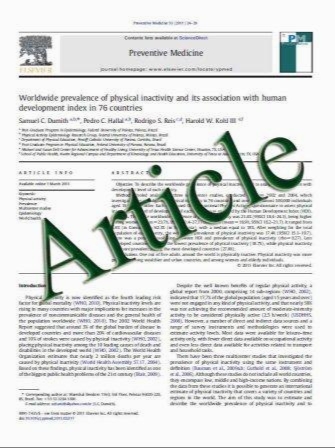Increased seroprevalence of Toxoplasma gondii in a population of patients with Bell’s palsy: a sceptical interpretation of the results regarding the pathogenesis of facial nerve palsy
- نوع فایل : کتاب
- زبان : انگلیسی
- مؤلف : Maria Riga G. Kefalidis A. Chatzimoschou G. Tripsianis S. Kartali H. Gouveris M. Katotomichelakis V. Danielides
- چاپ و سال / کشور: 2011
Description
Facial nerve oedema and anatomical predisposition to compression within the fallopian tube seem to be the only generally accepted facts in the pathophysiology of Bell’s palsy. Several infectious causes have been suggested as possible triggers of this oedema. Most of the suggested pathogens have been associated with facial nerve lesions during latent infections, reinfections or endogenous reactivations. The aim of this study was to investigate the seroprevalence of three such pathogens Toxoplasma gondii, Epstein–Barr virus (EBV) and cytomegalovirus (CMV) in a population of patients with facial nerve palsy. Fifty-six patients with Bell’s palsy were included in the study. A group of 25 individuals with similar age and gender distribution was used as control. Seropositivity for T. gondii, EBV viral capsid antigen (VCA) and CMV-specific IgM and IgG antibodies was investigated 2–5 days after the onset of the palsy. Comparisons for both IgM and IgG antibodies against T. gondii attributed significantly higher seroprevalence in the patients’ group than in the control group (p = 0.024 and 0.013, respectively). The respective examinations for EBV and CMV attributed no significant results. The roles of EBV and CMV in the pathogenesis of Bell’s palsy were not confirmed by this study. However, a significantly higher seroprevalence of IgM- and IgG-specific T. gondii antibodies was detected in patients with Bell’s palsy when compared to healthy controls. The possibility that facial nerve palsy might be a late complication of acquired toxoplasmosis may need to be addressed in further studies.
Eur Arch Otorhinolaryngol (2011) 268:1087–1092, Received: 21 June 2010 / Accepted: 19 January 2011 / Published online: 9 February 2011 Springer-Verlag 2011


